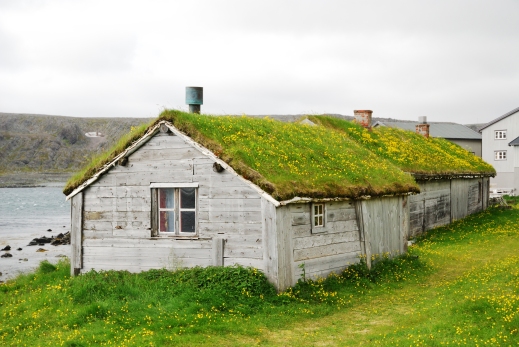Eco living: turn your roof into a green garden

Tucked away in a quiet corner of Islington, north London, is a green oasis of wild-flower meadows, hazel coppice and hawthorn thicket. Although still early in the season, a few hardy bees are buzzing around the meadow and native birds – tits and blackbirds – are rustling in the hedgerows. Hives supporting thriving colonies of the now endangered honey bee are scattered around the meadow where in high summer poppies, cornflower and other wild flowers will paint this urban landscape with vibrant colour.
The odd thing about this garden is that from street level, you have to look up to see it. The plants – flowers, shrubs and trees – are all planted on the roof of architect Justin Bere’s house, a 21st-century home that tries to redefine the relationship between buildings and the natural environment.
“From quite a young age I was alarmed at the way we were building over farmland and covering up nature,” says Justin, now a leading architect spearheading an aesthetic movement away from sharp-lined, human-dominated building and towards design that lets nature clamber over it. This ethic has inspired Justin to build “semi-submerged” homes with green roofs, sky gardens providing vegetable plots way above street level and habitat for wildlife in towns and cities where birds and insects are finding it increasingly difficult to find food and shelter.
Justin’s own home has all 240 sq m of its roof covered in greenery. He chose to expand out from the sedum found on most green roofs and planted a wide range of flowering plants to extend the pollen-collecting season for his bees. The hazel and hawthorn thickets provide shelter and food for birds.
“Scientific studies on green roofs show that ideally you need a long flowering season, from March to October, to be of real help to bees,” says Dusty Gedge, a nature conservationist and green roof expert. He is convinced that green roofs are the key to helping endangered species survive in urban environments. “We put common toadflax into a green roof in Lewisham, south London, and within three months the rare toadflax brocade moth was visiting,” he says. He is a mine of information about how rooftop plants can help insects. Sand bees, for example, use spring croci as navigation beacons.
To read the full article please visit: http://www.telegraph.co.uk/property/greenproperty/9952245/Eco-living-turn-your-roof-into-a-green-garden.html




